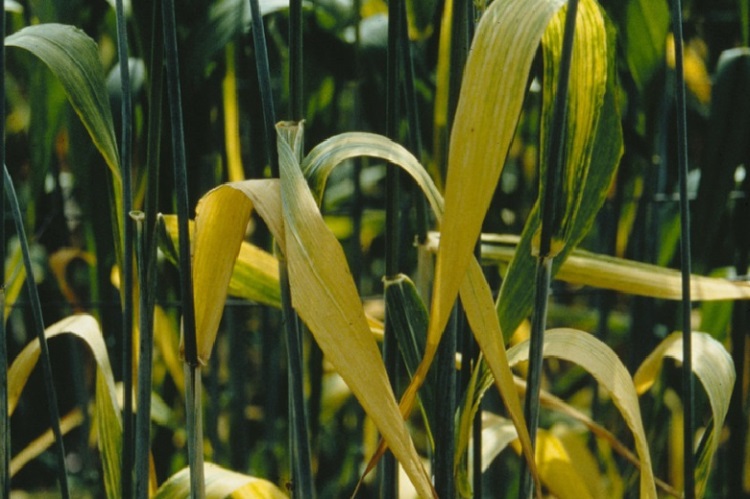Barley Yellow Dwarf Virus
Barley Yellow Dwarf Virus can affect a wide range of cereals and grasses and is spread through aphids. In barley, the leaf tips are bright yellow. Crops infected in the autumn are likely to be stunted, but later infected plant may show no signs of stunting. The lower part of the leaf remains a normal green colour.
The distribution can either be small pockets of crops, or occasional plants scattered through the field. The differences in distribution mirror the movement of the aphid vectors which infect the crop.
BYDV in barley should not be confused with Nitrogen deficiency, where the lower leaves are yellow overall. BYDV symptoms also occur in wheat and oats. In these crops, the discolouration on the leaf tips is usually red.

The main source of the virus is grass or volunteer cereals. The virus is transmitted by aphids, particularly the bird cherry virus and the grain aphid. Aphids can colonise crops by walking onto germinating cereals from grassy stubble and volunteers. Aphids can also fly into crops and these aphids could be on the wing from August through to late-October depending on the season. Severe infections can also occur where cereals are grown after grass and where the grass has been ploughed immediately prior to sowing.
Controlling the aphid vectors is the key to minimising BYDV. The best way of managing the "green-bridge" from one crop to another is to kill off any aphid host plants before sowing. Ideally, stubble from the previous crop should be desiccated with a herbicide, ploughed in 7-10 days later and left for another 2 weeks before sowing the next crop. Alternatively, stubble can be ploughed in and sowing delayed for 4 weeks. Both these approaches reduce the threat from walking aphids by killing off their host plants that could keep the aphids ticking over. Crops should be checked regularly as soon as they begin to emerge for the presence of aphids, and an aphicide treatment applied if aphids are being found.
Sign up to the FAS newsletter
Receive updates on news, events and publications from Scotland’s Farm Advisory Service
